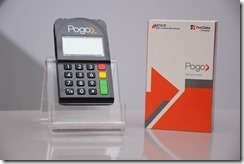International transfers can be inconvenient, expensive, or slow and particularly binding on migrants who need to make small value transfers. Yet while domestic money transfer has moved to the mobile channel in many cases, cross border remittances has proved more elusive. I was keen to learn more about this mobile-first international remittance service, hence caught up with Ambar Sur, CEO Terra to discuss the opportunity and challenges associated with digitizing cross-border remittances.
Ambar, what problem are you at Mahindra Comviva hoping to address with Terra?
 The cost of sending money home has dominated discourse on international remittances, with G8 adopting the 5X5 resolution to maximize flows and reduce the global average cost of transferring remittances. A bilateral analysis of costs, as opposed to looking at aggregates, however, reflects wide heterogeneity across corridors. Whilst the cost of sending money along certain corridors in Latin America and the Caribbean may have halved in some cases, along South-South remittance corridors migrants often incur steep costs. In 2014, Africans paid $7.5B, the equivalent of Rwanda’s GDP, to transfer $64B to Africa.
The cost of sending money home has dominated discourse on international remittances, with G8 adopting the 5X5 resolution to maximize flows and reduce the global average cost of transferring remittances. A bilateral analysis of costs, as opposed to looking at aggregates, however, reflects wide heterogeneity across corridors. Whilst the cost of sending money along certain corridors in Latin America and the Caribbean may have halved in some cases, along South-South remittance corridors migrants often incur steep costs. In 2014, Africans paid $7.5B, the equivalent of Rwanda’s GDP, to transfer $64B to Africa.
At Terra, our research shows a migrant moving from rural to urban Zimbabwe on average remits $45 every 15-20 days to support household expenditure. Yet when the same migrant moves to South Africa with marginal wage gains, the minimum viable remittance size is $150, causing him to defer sending money home.
What makes international remittances more costly than domestic transfers?
Typically higher cost has been seen to be due to shortcomings in institutional, technological and operating infrastructure in host and home countries, such as poor access to banking. These are real issues, but we view cost associated challenges in a broader perspective. Big investments have been made by providers to address persistent first and last mile issues and improve quality of domestic payment infrastructure in terms of access, speed and affordability. New services compare favourably against traditional cost-intensive processes for agents in brick-and-mortar shop-fronts to handle cash transfers. In Africa 60+ countries have already launched mobile money services.
Transferring money is expensive on account of limited inter-connectivity between financial institutions and systems. By applying the more favourable volume economics of large agent networks at the receiving end, mobile operator networks could lower the cost of remittances.
How could mobile payments change this?
Digital intermediaries could exploit widely available mobile payment technologies to enable service providers to share each other’s service architecture. This could rewrite the rules of international remittance from being a high-value, low-volume business to becoming an increasingly low-value high-volume business.
On the Send side, mobile phones provide convenience and security and on the Receive side they make it possible to reach money where formal financial institutions simply do not exist. Innovations in intermediate networks which unify end mobile service points could generate more consumer value, expand supply and improve volumes by 3X as lowering costs could encourage micro-transactions as low as $50. So the next time our friend in South Africa wants to send $50 to his daughter in Zimbabwe he will not be giving cash to a bus driver to hand carry!
Mobile enabling remittances is not new. Why has what you suggest not been achieved so far?
One needs to look at the history of innovation among mobile network operators (MNO) in emerging markets. In 2003, Mahindra Comviva in collaboration with Vodafone India launched its digital airtime distribution product. The ability to sell airtime in small denominations (< 10 cents) helped operators register 100% year-on-year growth in customer acquisition for a decade.
The remittance market is awaiting a similar revolution. The ability to convenient, affordably and securely remit money in sachets would unlock latent market potential and enable a range of use cases. A parent, for instance could send a gift of $50 to their child, anytime, anyway and almost anywhere in the world.
How are mobile operators around the world approaching the remittances opportunity?
MNOs have designed operational and network systems to process a large volume of micro-transactions and are well-positioned serve this market. For instance, MNOs in Bangladesh handle 18M recharge transactions on a single day while MNOS in India process 1billion+ call data records daily.
As mobile money systems mature, remittances represent a significant source of additional fund inflows. The average transaction size of an international money transfer exceeds $120, which is equivalent to 4 domestic P2P transactions. As per a CGAP study, in 2010, they were 11 examples of deployments offering inward remittances. By 2014, they were 45+ deployment – a significant fourfold increase in four years. Remittance transfers via mobile phones have advanced primarily in Africa (Zimbabwe, Kenya, Uganda, Rwanda, Burkina Faso, Niger and Côte d'Ivoire) and Asia (the Philippines, Pakistan and Bangladesh).
What are the different business models you observe in the market?
We largely seeing two models. Firstly, unilateral models where operators facilitate cross-border transfers between their own operating companies: for instance Millicom launched a cross-border mobile money remittance service in February 2014 between Tigo Tanzania and Tigo Rwanda. Secondly, negotiated agreements involve partnerships of MNOs on certain corridors or legacy MTOs to benefit from an established network of agents in hundreds of countries: Bharti Airtel and MTN partnered to launch a service between Burkina Faso and Côte d'Ivoire.
Other service providers are also moving in this direction, for instance AMUCSS in rural Mexico created the remittance distribution network Envíos Confianza, which connected a rural microfinance institutions (MFIs) to a single platform, achieving economies of scale, and makes it easier for the small institutions to pay out remittances.
What are some challenges faced?
These are initial steps but the nature of these arrangements inherently prevents service scaling. For example, it took Safaricom over a year to create a mobile remittance service between UK and Kenya alone, primarily due to the need to negotiate FX related issues between Central banks.
I believe MNOs need to take advantage of investments they have made over the years and establish a “one network”, enabling users to send money to any mobile. They have a real opportunity to pool infrastructure and create a mass-oriented, affordable network for small-value transfers and benefit from resultant network effects. The direct credit into beneficiary wallets would encourage more transactions and promote financial deepening.
Are mobile wallet service providers ready to cooperate at such scale?
I could site two examples from the telecoms industry. In early 2000 MNOs agreed to interconnect personal short messaging systems. The resultant network impact created a significant revenue upside for MNOs.
The industry had yet another opportunity to redefine messaging. In 2005-2006, all four private operators in India launched instant messaging services (powered by us) as part of a GSMA initiative. The operators however lost an opportunity to interconnect services, allowing WhatsApp to shortly after capture a large part of the instant messaging market and cannibalize P2P revenues.
Without discounting the complexities of interconnecting mobile money systems, these cases offer key learnings for operators around the world.
But is there revenue for mobile operators in this?
Across mobile-first emerging economies, mobile wallets represent a significant adjacent revenue stream for MNOs. The landscape is evolving rapidly, from new deployments to changing consumer behaviours. And some countries are recording a high number of financial transactions per active user (TPAU) with DRC at 45 TPAU, Sierra Leone 30 TPAU, Tchad 20 TPAU, Burkina Faso 18 TPAU and Zambia 12 TPAU.
Operators realize cross-border payments, beginning with personal transfers, could help consolidate customer relationship and fuel the Mobile Wallet 2.0 growth wave. Remittances can encourage and accelerate the adoption of new technologies, and offer opportunities to promote a range of new financial products among consumers, for instance by enabling senders to pay bills directly rather than sending cash. SMEs involved in informal trade contributing over 50% of total economic output in several emerging markets, especially Sub-Saharan Africa, can be targeted as there is an untapped demand for using risk-free, legitimate channels to transfer money across borders.
This brings me to the vital “how” question. Do innovations like these not need a favourable regulatory environment that prioritizes financial inclusion of remittance recipients?
With remittances contributing between 1% and 10% to GDP, regulators are aware that monies sent by overseas workers are a strong driver of financial inclusion in both sending and receiving countries but this is yet to translate into an adequate regulatory framework for small-value mobile enabled transactions.
Remittance receiving markets are at different stages of mobile money development and regulations are evolving as new use cases emerge. Even in Kenya, the pioneer in mobile money services, formal guidelines for mobile remittances services are still evolving. In recent months, regulators in Rwanda, Zimbabwe, Tanzania, Kenya, Philippines and Bangladesh have allowed MNOs to terminate cross-border transactions. In several other receiving countries such as Mozambique, the regulation around interoperability and mobile enabled cross-border remittances is still being formulated.
What are some regulatory gaps and potential changes you foresee for the future?
Currently there are no guidelines for an international remittances hub that interlinks multiple service providers. This is a significant regulatory gap. Regulators are willing to provide approvals for bilateral remittance contracts as we see from the number of announcements in the last 12 months. The model is however restrictive in terms of achieving rapid scale. Mobile wallet providers need to seek fresh approvals for each new corridor from the regulator which is inefficient and time-consuming. Likewise, licensed MTOs, who have signed an agreement with a mobile wallet service provider need to approach the regulator for partnering with another operator in the same country.
Another key issue is the complexity of adhering to compliance norms. Regulators in many countries such as UAE and Saudi Arabia do not allow remittance service providers to export resident data outside the country of origin, which creates new challenges for building an interoperable network. In predominant prepay markets there is no foolproof mechanism for registration of SIM cards. A SIM card may be shared among family, adding a new dimension to making mobile phones the receiving channel for cross border remittances.
How do these services benefit from support from the ecosystem?
All remittance transactions must be backed by a bank account. Banks have a low risk appetite due to potential reputational damage. Several banks in sending countries especially in the US are refusing to open or terminate accounts of MTOs. The recent predicament of Somalian migrants with US banks closing remittance account is a worrying trend. HSBC and Barclays in UK and WestPac in Australia have exited the remittance business, citing rising cost of compliance of anti-money laundering regulations.
Other issues relate to the taxation regime in each country. Taxes can be as high as 10% of the total service fee in several receiving markets, escalating remittal cost for consumers.
While there cannot be a uniform standard as these issues are country specific, the industry and regulators need to collaborate to figure out the “how” of bringing more remittance clients into the formal financial system.
What do you see to be the outlook for remittances for the next three to five years?
I don’t expect the fundamental business would change but we would do the same thing in a bigger, better way. Currently, the share of mobile as a channel to remit monies is 2%, as per Global Findex findings. By exploiting ubiquitous mobile connectivity, we have the capability today to create newer, efficient models which would ultimately expand the overall market. In the next five years, with the collective efforts of all stakeholders, we could see a minimum of 20% of remittances flowing via the mobile channel.
What is Terra’s role in the ecosystem?
Terra is building the rails for mobile powered international payments. We are architecting a new model by interconnecting existent digital financial service providers whilst assuming complete responsibility for obtaining and/or ensuring adherence to all regulatory requirements for conducting business. Our model, predicated on the ability to aggregate available infrastructure generates greater value for customers at lower costs and ultimately expands the industry.
Starting with remittances, the same network can be exploited to launch contextual payment-related products for an increasingly connected customer base. As a team we are deeply convinced of the order of magnitude of the impact we would bring to the lives of consumers globally.
Ambar, thanks for sharing your thoughts and I wish you every success in achieving your goals!
 |
Ambar Sur is the Executive Vice President for new projects at Mahindra Comviva and Founder and CEO Terra. A subsidiary of Mahindra Comviva, Terra is a mobile-first international payments company. As CEO, Ambar leads a team focused on Terra’s vision to digitize international money transfers, and deepen access to financial services.
Previously Ambar has been Head Global Market Units, Chief Marketing Officer and Director-EMEA at Mahindra Comviva.
CellCloud Technologies, an innovative prepaid solutions company co-founded by Ambar in 2001, merged with Mahindra Comviva in 2002. |
 It is easy to find fault in company launches, but as a former product manager I fully understand the courage it takes to even get to the market in the face of uncertainty, and the myriad factors that stand between you and success.
It is easy to find fault in company launches, but as a former product manager I fully understand the courage it takes to even get to the market in the face of uncertainty, and the myriad factors that stand between you and success. 


















